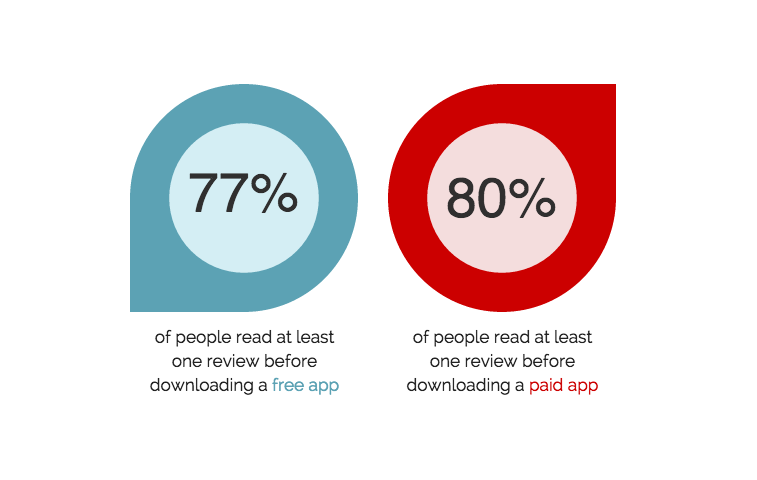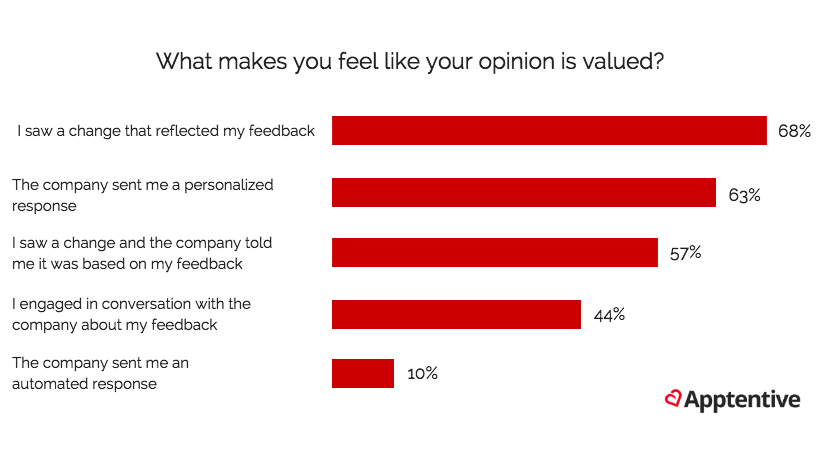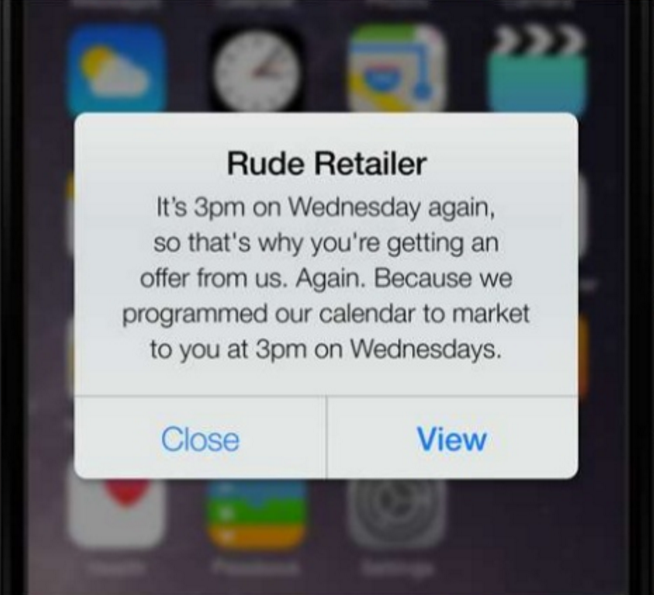How to Manage your Brand’s Mobile Reputation
Mobile App Growth
August 2, 2016
This is a guest post from Ashley Sefferman at Apptentive.
It’s obvious that a mobile presence is an extension of your brand, but what many app marketers might not realize is just how much their mobile channels influence their brand’s general reputation.
Today’s consumers have come to expect their customer experience with a brand will match across all of its channels (in-store, online, mobile, apps, etc.), and brands want the same; after all, they’ve invested too much time and energy into creating a five-star customer experience for one neglected channel to cause damage to the entire brand.
Apptentive recently conducted a consumer study Apptentive on how apps influence brand reputation to see how consumer view brands based on how they’re portrayed in the app stores. Today’s post includes data from the study, along with tips on how you can better manage your brand’s reputation through your mobile channels.
Let’s dive in!
Apps are an extension of your brand
Mobile apps are an extension of your brand, but all too often, they get left out of the marketing brand strategy discussion.
A recent study by Sitecore and Vanson Bourne found that 97% of mobile marketers believe a good mobile experience impacts customer loyalty, but 41% have no mobile marketing strategy or have yet to implement an existing plan. As consumer expectations soar, it is no longer acceptable to leave the mobile channel out of your marketing discussions. If you’re not using mobile as a means to manage your brand’s reputation, there is a gaping hole in your strategy.
Content in the app stores is also an extension of your brand, and can have a negative impact on your brand if it’s not being monitored and upkept. Consumers use the app stores as a place to vocalize their thoughts with ratings and reviews. In our survey, we found 73% of consumers are likely to leave a review after a negative app experience. If your app has negative reviews, your conversion rate is likely to suffer. In the same study, 77% of respondents reported that they read at least one review before downloading a free app, and 80% before downloading a paid app.
Your mobile customers will take advantage of this opportunity to leave feedback, whether you’re capitalizing on it or not.

It’s great to gather customer feedback, but when customers use the app stores to complain about the brand itself rather than their experience with the brand, the feedback is no longer helpful.
Sharing thoughts on a brand is not the intended purpose of app store reviews, but still have an effect on potential customers. If people are considering your brand and looking at the app store to decide, they’ll be influenced either in a positive way or see it as a barrier to entry. In order to keep the right feedback coming from customers in your app store ratings and reviews, you must give them another way to connect with your brand through your mobile experience. So they can share their feedback around your brand, rather than around your mobile experience.
Four tips for app reputation management
If your brand’s mobile reputation management strategy is lacking, it’s a red flag to consumers that your customer experience is behind across all channels. Here are a few tips to help you use your mobile app as a tool for brand reputation management:
1. Set up a listening tool before you continue improving your app
When you launch a new version of your app, why wait until after launch to start listening to customers? How will you be able to learn about their experience with the new version? How does that show your customer focus?
A listening tool serves as an insurance policy to avoid potentially disastrous situations. By enabling yourself to listen directly to customers, you’re able to improve upon your app all while protecting your brand’s reputation.
When customers have a voice, they’ll willingly provide feedback directly to the company. In a joint study with Apptentive and SurveyMonkey, we found almost everyone who prefers to leave feedback in-app is likely to do so when asked for it directly (98%).
However, when you don’t give customers an outlet to provide feedback, they’re left with two choices: leave a public rating and review, or stay silent. Both are damaging to your brand.
2. Encourage ratings and reviews from the right audience
In other words, segment your audience. You can’t stop people from leaving negative ratings and reviews, but you can exercise some control over how many negative reviews make it to a public forum. Using a segmenting tool allows you to group your audience and capture negative feedback directly, while positive feedback is encouraged to be left in the app store.
To start segmenting your customers effectively, consider these three tips:
- Start by understanding your goals. Do you want to boost your ratings and reviews? Do you want to hear from your unhappy customers to understand how to make their experience better? Do you want to know what keeps your most active customers coming back to your app? Once you know your goals, you’ll be able to determine the right audience to target.
- Next, define your audience segment. You can create segments based on your customers’ device specifications (device data), which version of your app they are using, how active they are within your app, or any other information that is specific to your business (custom data—both person and device).
- Finally, evaluate your results. Were you able to achieve your goals with the segment(s) used? If not, work to understand how you can set up a different segment that’s more relevant to your desired outcome.
3. Listen to your customers and implement their feedback
Customers want to be heard, and they expect companies to listen. If you aren’t proactively asking for and listening to customer feedback, you’re not meeting expectations.
Additionally, taking a step beyond lending an ear can score you serious points with customers. If people know their feedback has been implemented, an overwhelming majority are at least somewhat likely to become loyal patrons to the company. Respondents told us what it would take for companies to make them feel their opinions were valued. Here’s what they had to say:

Customer feedback today is more accessible than ever, thanks to mobile. From quickly iterating on new features, to remedying a sour situation with a customer who has had a negative experience, mobile customer feedback can have immediate and lasting impact on several areas of the business.
However, making sense of customer feedback and prioritizing next steps can be tricky.
To start, look at your current product roadmap. Weigh the priority level of projects coming out of your customers’ feedback. Many times, a customer will report a bug that may be affecting a large group of customers, so be sure to keep those factors in mind while assigning priority.
Even if the updates don’t make it to the top of your list, you can still communicate with customers around how long they can expect to see their feedback implemented. An email letting a customer know their voice has been heard and that your team is on it is enough to make them feel validated and valued.
4. Ask for feedback at the right time
Timing is critical when asking a customer for feedback. The entire reason for gathering feedback is to understand how to make the customer experience better, so interrupting a customer while they’re trying to accomplish something in your app is counterintuitive.
Even though mobile is everywhere, it can still be impersonal.
Odds are, you’ve been interrupted in-app with a prompt that, instead of serving its intended purpose to gather feedback, comes off as disruptive to your experience. You probably dismissed the prompt immediately rather than taking the action it suggested, which is a lose-lose for both you and for the company.

To avoid this situation, be sure to find the right “mobile moment” before asking a customer for feedback.
To figure out the right mobile moment to ask for feedback, look at the high-value actions taken within your app to see where they may have a positive experience. For a shopping app, the right moment could mean asking for feedback right after a purchase is complete. Gaming apps should consider asking after a level is won, rather than when a level is lost.
Depending on the purpose your app serves, the right mobile moment will look different for every company. It’s up to you to explore your customers’ journey to understand the best place to ask for feedback.
Looking ahead
Protecting your brand’s image is no easy feat, but it’s manageable with the right tools.
Mobile apps are a great way to keep your finger on the pulse of your customer base, and are useful in guarding the gate to app store content.
Remember, apps are an extension of your brand, and app store content has a profound effect on your brand as a whole, no matter who you are. The impact of ratings and reviews don’t discriminate; brand name or no brand name, consumer perception changes based on how many stars you’re sporting and what’s included in your reviews.
Hopefully the tips mentioned above get you started in managing your brand’s mobile reputation, which will lead to a fluid brand experience across all of your channels!
About the Author
Ashley Sefferman is Head of Content at Apptentive. A mobile marketing and content strategy enthusiast, she writes about mobile apps, customer loyalty, inbound marketing, and making the mobile world a better place for people. Follow Ashley on Twitter @ashseff.
- Engage, Retain, Earn: Growth Strategy for Game Apps [Based on Data] - 15 September 2022
- How to do App Store Optimization step-by-step: a full cycle of ASO in the App Store and Google Play - 9 August 2022
- The Importance of A/B Testing - 13 January 2022


A great informative article about managing your brand’s mobile reputation.